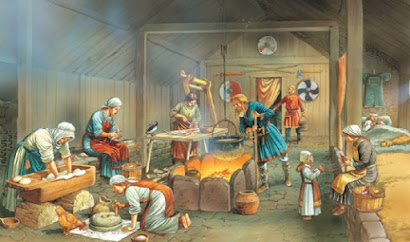Introduction
This assignment was created by Brandon Molina for HIST 101: Western Civilization I at Northern Virginia Community College. The purpose of the assignment is to create an imaginary primary source in the use of a travel journal. For this project, the focus is on the Viking Age, specifically in Anglo-Saxon England. The project is centered around the idea of the use of saga as Viking mainly used oral traditions to pass down stories. Vikings were not illiterate per se, they did know how to use runes. They did not write as much in a way to save the information until after the introduction to Christianity and the Roman alphabet (see Judith Jesch, Women in the Viking Age, p. 180). Olaf's story is passed down through his children and eventually written down to preserve the family story.




